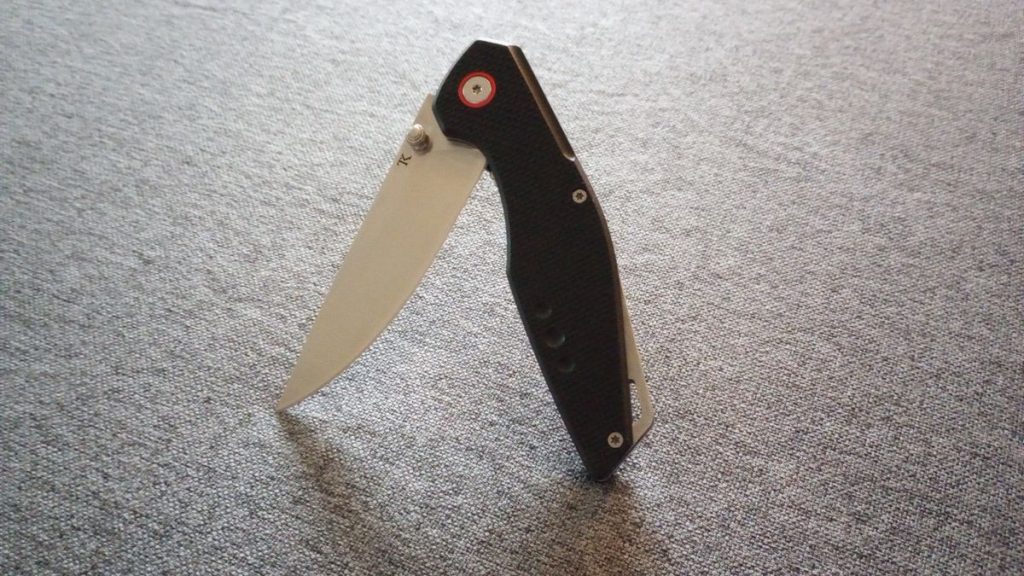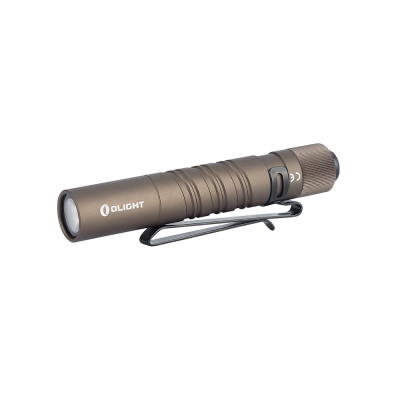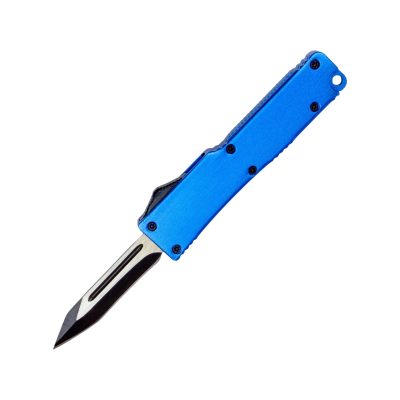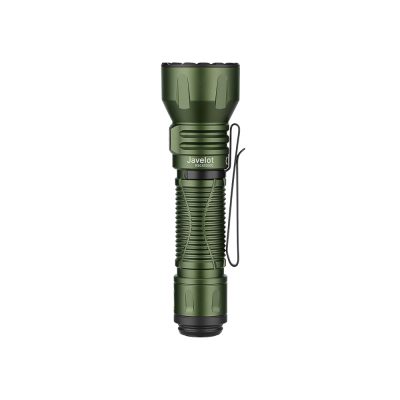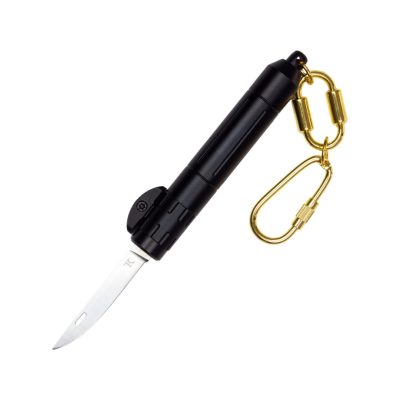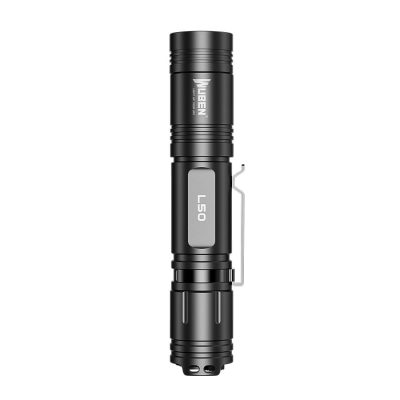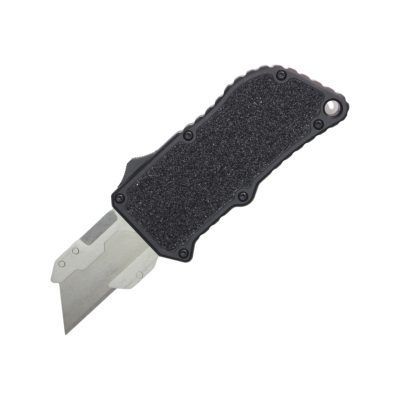Determine How You Plan to Use Your Knife
When it comes to determining specific times and places of particular innovations, archaeological discoveries are something of a lagging indicator. Allow us to explain it with a literary reference, namely Percy Bysshe Shelley’s famous poem “Ozymandias.” In it, a traveler recounts how he discovered a wrecked statue of a proud ruler that bore an inscription proclaiming his eternal dominance. However, “Nothing beside remains. Round the decay / Of that colossal wreck, boundless and bare / The lone and level sands stretch far away.” Shelley intended this as an indictment of hubris, but it also provides us with some practical insights. Time and entropy consume material things, and if we find an early example of a particular kind of technological discovery, you can rest assured that it existed earlier — and perhaps a lot earlier.
In this article, we will discuss the point at which we know for certain that pocket knives were invented, prior blade-related developments that led to the development of the pocket knife, and the design alterations that occurred after the invention of the first pocket knife (including OTFs!).
Precursors to the Pocket Knife
Interestingly, the first known knives (swords would come much later and, in some cultures, not at all) weren’t crafted from metal. Early man used stone tools, and while we might struggle to call some of those examples blades, flint knives certainly would’ve qualified. Hard, sharp, and long-lasting, these knives turned up during the Early Bronze Age, one example being the intricately carved Gebel el-Arak knife currently in The Louvre. Though the strikingly beautiful ivory handle bears intricate bas-relief figures and the carefully chipped blade still seems sharp enough to slice skin, another stronger material eventually supplanted it: bronze.
The move from stone to metal had a number of drawbacks. For one thing, flint tends to maintain its edge, whereas bronze required regular sharpening and maintenance to remain in working order. Also, since bronze is a multi-metal alloy, it requires an entire infrastructure in order to produce, such as mining, smelting, and forging; flint implements need only artisans skilled at knapping {i.e., a process of intentionally shaping stone through controlled fracturing}. However, bronze possesses numerous advantages over stone, such as increased strength and better malleability. The concomitant result was an explosion of tools and weapon types, including spears, axes, dirks, mallets, and swords.
Bronze didn’t usher in the age of the folding knife, though, at least as far as we can tell. Though we must acknowledge the axiom we highlighted in our introduction — namely the idea that innovations likely existed prior to our earliest examples of them — we also have to admit that we’ve never found any bronze pocket knives. The first known pocket knife hearkens back to the Iron Age and a culture that eventually would largely be lost to time.
The Hallstatt Culture and the First Known Pocket Knife
In 1846, a mine operator named Johann Georg Ramsauer was working near Lake Hallstatt when he made a discovery. Instead of simply finding ore, he stumbled upon an ancient cemetery, which he then proceeded to excavate, making copious notes and even producing multiple representative paintings. Later scholars continued his work, discovering over 1,000 graves. They also unearthed some fascinating facts and findings about the Hallstatt settlers. For instance, just as Ramsauer had worked the area’s mines, so had the settlers, although they were looking for salt. The place became a trading center due to their discovery of salt, and their society lasted from the late Bronze Age through the Early Iron Age. But when the salt ran out, their society also faded — but not before at least one person created something very, very interesting.
World History Encyclopedia notes that one aristocratic grave similar to those found at the Hallstatt site was an earthen heap supported by an internal structure, and that the “wooden walls of the chamber room were made of oak logs … Also in the tomb were a four-wheeled waggon [sic] with horse trappings, a conical hat made of birchbark, a quiver of arrows, and hooks for fishing. … The only weapon in the tomb was a knife, and this is a point of distinction compared to Celtic tombs in later periods.” We don’t know why this particular grave only boasted a single knife, but for the Hallstatt burial place, perhaps it was due to the fact that its knife could fold.
Iron tools superseded bronze tools primarily due to economic pressures rather than the advantages offered by the ferrous metal. But to judge by the Hallstatt knife, it seems the switch to a new crafting material also led to further design developments. The Hallstatt knife followed a very basic design that basically only allowed for it to open and close with no means of locking, leading some to declare it a common “jackknife.” But while it had a simple enough configuration, the Hallstatt knife also had a bone handle, likely indicating that it was no mean peasant knife. This was a tool intended for someone of importance, a tool that combined aesthetics with ease of use.
Later Knife Developments
Even though it’s our earliest example of a folding blade, the Hallstatt knife was almost certainly not the sole example, and knife technology quickly advanced from there. Archeologists have unearthed Roman-era examples of folding knives around Spain, and some examples from this time period were friction folders, a kind of knife where the blade features an elongated tang that fits into the handle’s spine and uses the pressure of a thumb to remain open. Eventually, those knives would lose the friction aspect and gain a proper locking mechanism. Vikings also developed friction folders, although many of their blades also featured locking clasps.
Development of knife designs would stall until about 400 years ago with the creation in Sheffield, England, of a spring-assisted pocketknife that came to be known as a Barlow knife. Innovations followed quickly after with the invention of various kinds of collar, spine, and liner locks, as well as harnessing kinetic power for fast openings. Today, that tradition continues with out-the-front knives (aka OTFs).
TacKnives provides high-quality OTFs in many configurations for reasonable prices. Browse our selection here.
Browse Our Folding Pocket KNives
-
$17.99 – $159.95Price range: $17.99 through $159.95Select options This product has multiple variants. The options may be chosen on the product page
-
Rated 4.80 out of 5Select options This product has multiple variants. The options may be chosen on the product page
$29.95Original price was: $29.95.$14.95Current price is: $14.95. -
$104.99Select options This product has multiple variants. The options may be chosen on the product page
-
Rated 4.86 out of 5Select options This product has multiple variants. The options may be chosen on the product page
$39.95Original price was: $39.95.$14.95Current price is: $14.95. -
Rated 4.88 out of 5$29.95 – $59.95Price range: $29.95 through $59.95Select options This product has multiple variants. The options may be chosen on the product page

